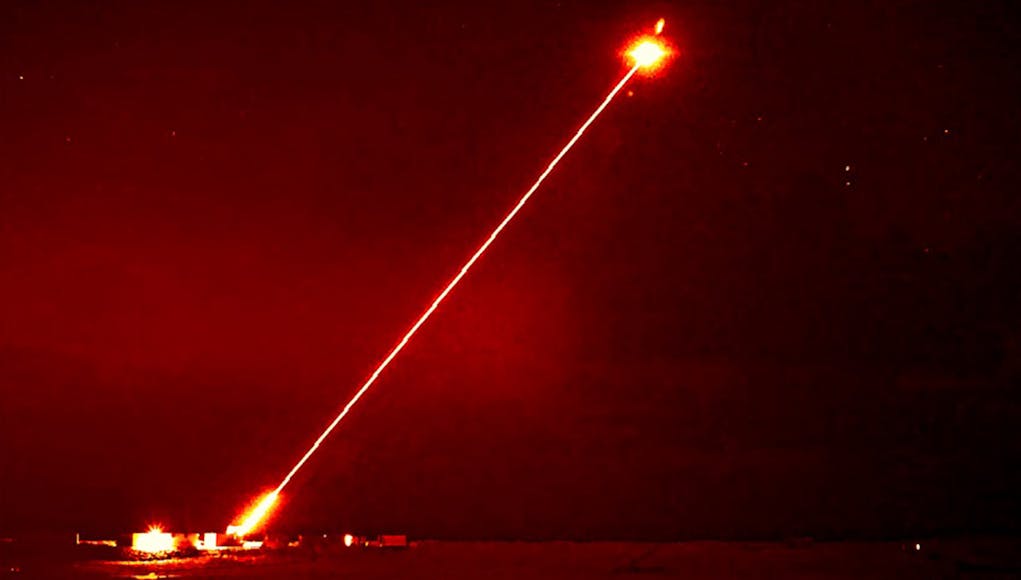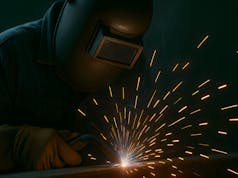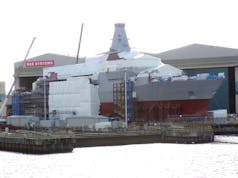John Healey, Shadow Secretary of State for Defence, recently queried the Ministry of Defence (MOD) about the progression of the DragonFire laser project, a cutting-edge military technology initiative:
“To ask the Secretary of State for Defence, with reference to his Department’s news story entitled Advanced future military laser achieves UK first, published on 19 January 2024, what the next steps are for the DragonFire development effort.”
James Cartlidge, the Minister of State at the MOD, provided an overview of the current status and upcoming phases of the DragonFire project:
“Commissioned by the Ministry of Defence (MOD) Chief Scientific Adviser through the Defence Science and Technology (DST) Directorate and delivered by a joint Industry and Dstl team, the DragonFire Technology Demonstrator has undertaken a series of trials to develop the understanding of the potential capabilities of laser weapons.
With the success of the recent trials in the Hebrides, DST and the joint team are currently evaluating the trials results and developing plans to accelerate the testing of the DragonFire laser against representative targets in more challenging scenarios.
This work is done in coordination with MOD’s Complex Weapons Directed Energy Weapons Team who are looking at how Directed Energy Weapons systems can be rapidly transitioned from technology into capability on behalf of the Front-Line Commands.”
During a recent trial at the MOD’s Hebrides Range, the DragonFire laser directed energy weapon (LDEW) system achieved the UK’s first high-power firing of a laser weapon against aerial targets.
The range of DragonFire is classified, but it is a line-of-sight weapon and can engage with any visible target.
- First high-power firing of a laser weapon against aerial targets
- Laser boasts pinpoint accuracy and low long-term costs
“DragonFire exploits UK technology to be able to deliver a high power laser over long ranges. The precision required is equivalent to hitting a £1 coin from a kilometre away. Laser-directed energy weapons can engage targets at the speed of light, and use an intense beam of light to cut through the target, leading to structural failure or more impactful results if the warhead is targeted.
Firing it for 10 seconds is the cost equivalent of using a regular heater for just an hour. Therefore, it has the potential to be a long-term low-cost alternative to certain tasks missiles currently carry out. The cost of operating the laser is typically less than £10 per shot.”

DragonFire is led by the Defence Science and Technology Laboratory (Dstl), on behalf of the UK MOD, working with its industry partners MBDA, Leonardo and QinetiQ.
This milestone demonstrated the ability to engage aerial targets at relevant ranges and is a major step in bringing this technology into service. Both the Army and Royal Navy are considering using this technology as part of their future Air Defence capabilities.
Defence Secretary, Grant Shapp said:
“This type of cutting-edge weaponry has the potential to revolutionise the battlespace by reducing the reliance on expensive ammunition, while also lowering the risk of collateral damage. Investments with industry partners in advanced technologies like DragonFire are crucial in a highly contested world, helping us maintain the battle-winning edge and keep the nation safe.”
The Ministry of Defence say that the latest milestone builds on a series of highly successful trials, including the first static high-power laser firing of a sovereign UK capability and demonstration of the DragonFire system’s ability to track moving air and sea targets with very high accuracy at range.
“Building on this research, the MOD recently announced its intention to fund a multi-million-pound programme to transition the technology from the research environment to the battlefield. The latest trial was sponsored by the MOD’s Defence Science and Technology (DST) organisation and Strategic Programmes and enabled by many other agencies across government, ensuring all regulatory and safety approval requirements were satisfied.”
Dstl’s Chief Executive, Dr Paul Hollinshead said:
“These trials have seen us take a huge step forward in realising the potential opportunities and understanding the threats posed by directed energy weapons. With our decades of knowledge, skills, and operational experience, Dstl’s expertise is critical to helping the armed forces prepare for the future.”
The MOD added:
“The DragonFire weapon system is the result of a £100 million joint investment by the Ministry of Defence and industry. Together, the companies involved are supporting highly-skilled UK jobs in new cutting-edge technologies that are delivering a significant step-change in the UK’s capability in LDEW systems. In 2017 the MOD’s Chief Scientific Advisor’s Research Programme awarded a £30 million contract to the DragonFire consortium to demonstrate the potential of LDEWs.”
Dr Nick Joad, DST said:
“This is a really innovative application of science and engineering and is the fruit of sustained investment and effort. DragonFire uses cutting-edge science and technology and delivers much greater performance than other systems of a similar class. DragonFire provides a step-change in our ability to deal with high-performance and low-cost threats.”
UK defence is continuing to invest in these game-changing technologies and is advancing the plans which will ultimately bring them into service.
Shimon Fhima, Director Strategic Programmes for the MOD said:
“The DragonFire trials at the Hebrides demonstrated that our world-leading technology can track and engage high-end effects at range. In a world of evolving threats we know that our focus must be on getting capability to the warfighter and we will look to accelerate this next phase of activity.”














Great progress. For what is undoubtedly, a very complex technology demonstrator.
Good to know that the concerns expressed yesterday on the other thread are (at least presently) unfounded. It will be interested to see where the next phase takes us. It’s interesting that it suggests it has far greater performance to other systems of its class. Would love to have more insight into what they mean by that is it accuracy, tracking and focusing thus persistence of the beam on any given spot or does it have more destructive power than lasers of similar power by some manipulation of beam or pulsing advantage. Former seems more likely perhaps but maybe both come into the equation.
Reflecting upon that I assume the next series of tests will push the boundaries of the present set to more exacting conditions/targets and thereafter perhaps upping the power which is where my question above becomes more relevant perhaps in raising the question as to at what level it becomes truly effective if the claims of superiority to equivalent systems holds water. Additionally to that I wonder if multiple lasers might be used in unison to increase any effect on a target especially if the focus on a given spot can be as accurate as claimed and that spot can be acquired by multiple lasers. Could make a big difference in capability.
Hi. Could we try and make it combine with other lasers and make a barrier… like a fish net effect…. that could cover vast parts of the uk. Anything comes are way will be vaporised soon as it comes in contact…..
Just a suggestion
It uses multi-laced beams from a cluster of lasers and apparently they have solved how to make them coherent. The question now is how much the power can be increased. They apparently solved the power supply to the intended weapon in part by utilizing technology from Formulae One. Obviously a question is, how compact can they make the power supply. Power increase will be a priority quest as well as hardening the system for field use. Interpreting the MOD’s use of English to glean some pattern is an art!
Seems clear the two are linked. If you’ve got a British high power laser available and proving itself, then why would you waste time and money playing with a low power foreign laser.
I’m now confused- firstly announced that trials on warships- frigates were not going to advance but now a land based focus seems to be relevant and viable with the system being able to be rapidly transitioned into a front-line role- or so the minister for defence claims.
So where does that leave us?
I agree clarity required, part of me thinks the tests on a frigate did not directly relate to Dragonfire maybe others can add to this equation, but I don’t remember reading anything that claimed that Dragonfire was specifically planned this year to be tested on a frigate. But it’s on this site somewhere about a year ago mentioning laser systems that seemed independent of Dragonfire and indeed because at that time DF had gone quiet some contemplated upon whether it had effectively been replaced by these new potential platforms though the reports were almost bereft of any details. So must admit I’m at a loss as to what yesterday’s news was actually referring to. That said initial full firing tests for DF were originally reported at least 18mths back were to take place last Jan but nothing was reported till a good 6 mths later so I guess it could mean DF is 6 mths behind original plans so might be a reason for ship trials to take place later too. So as I started this, clarity would be helpful or we are just speculating on spartan actual information.
Isn’t this two different projects?
Yes. Different projects.
The cancelled one was a Thales-led project called project Tracey, being run by MoD’s Team Hersa, which includes members from the procurement arm DE&S and the science arm DSTL, and who have been charged with delivery of DEW demonstrators. Other industry consortium members 9of the cancelled project) were BAE Systems, Chess Dynamics , Vision4CE and IPG. It was supposed to be delivered quickly, low risk and partly with existing technology. Another project in the group is reported to be in the 15 kW range, and it’s probable that’s the sort of start off power the ship-mounted version would have had too.
The Dragonfire consortium is led by MBDA and includes Leonardo UK, QinetiQ and the MOD’s DSTL, with GKN, Arke, BAE Systems and Marshall Land Systems participating. It’s higher risk, higher power, and presumably higher cost, starting at the 50 kW range.
Both projects were supposed to deliver a tech demonstrator.
I don’t think we have any spare warships at the moment that could be used for trial purposes
I’m confused, the article seems to be a synopsis of what has already happened, yet the headline talks about outlining the next steps.
What are the next steps outlined above?
More test..next step. As far as I remember the thing has several laser sources combined to give one output?
We need to continue testing and developing it..but I feel the system needs to reach the effectiveness of a 40mm Bofors before we rush out and fit them on everything. I reckon 10km or whatever a Bofors reaches to is a big ask at the moment even with the American “,battlestar” 300Kw laser…(and see the size of generating box it needs). Steady progress is what’s required.
AA
A sufficiently powerful beam weapon….is a slashing weapon. If a sufficiently powerful beam can be generated then it can slice through a target. You can cut gun barrels off the enemies weapons. You can slice radar masts off. You could slice through a hull. You could slice through an enemy tanks tracks. Obviously targeting the munitions would be deadly. As for aircraft, who will want to man an aircraft against a beam weapon travelling at the speed of light? Several systems targeting would increase the energy on the target of course.
The beam weapon itself would require protecting from the elements and incoming fire such as bullets etc. a rapid armoured iris may be developed as well as an armoured unit. And hopefully modular for rapid component replacement.
And what about an X-Ray laser or better still a Gamma Ray laser or some combination firing plasma balls. Perhaps even an anti matter laser. Some future possibilities.
I was also thinking about grasers, but I don’t believe the technology is sufficiently mature to weaponize. The day will come, i’m sure.
A land-based option seems to be the first step which makes sense as this will allow for future growth potential to be tested i.e., space for additional power to be added to increase the range.
How long is line of sight?
“How Far Can The Eye See on a Clear Day? From the ground, a human’s vision range is up to three miles—until the horizon line. However, a person can see many more miles from a greater elevation and even farther if the object they are viewing is also high above ground level.”
So are we currently talking about a range of up to three miles judging from the picture above?
“it is a line-of-sight weapon and can engage with any visible target.”
If by engage with we mean burn, I think this statement is nonsense and it’s pointless to read too much about range into it or talk about distances in terms of the horizon. However it might be able to dazzle sensors at very long distances. We have seen the issue with civvy handheld laser pointers meant to shine a dot a few feet away dazzling US aircraft.
Yes it’s an LOS weapon which means the target once acquired has too be continuously held in the beam for any damage too occur and LOS for a Drone would be under 1 mile doesn’t give you much time Dragon Fire needs too ramp up its wattage output too increase range and destructive power
Cynic that I am, it will be thrown in the bin with a load of other research projects. Getting these things fit to use and deployed in the battle space is expensive, the Americans will, or have done it, but then their budget a tad bigger than ours !
When I read “MOD outlines future steps” I was expecting to see some. 🤔
Good progress being made , I just hope the MOD doesn’t do it’s usual trick of cost-cutting and pull the project . It has great potential as a cheap defensive weapon particularly against the new generation of hypersonic weapons
I suspect that, at least for the short term, it is much more likely to be an anti-drone rather than anti-hypersonic weapon due to effective engagement range in real world conditions & I suspect the duration of “shot” (both required for effect & generation ability).
Increase Wattage , and increase range destruction range on LOS was 1 mile that’s no long too counter the threat as trials would be conducted in the Deliberate mode not an Alarm mode you would only have seconds too react to a threat Drone and Drone Swarms in this configuration of Dragon Fire possible Hypersonic AS Ms doubtful .Unless we’re not being told the whole story ,that’s my assumption Heidfirst